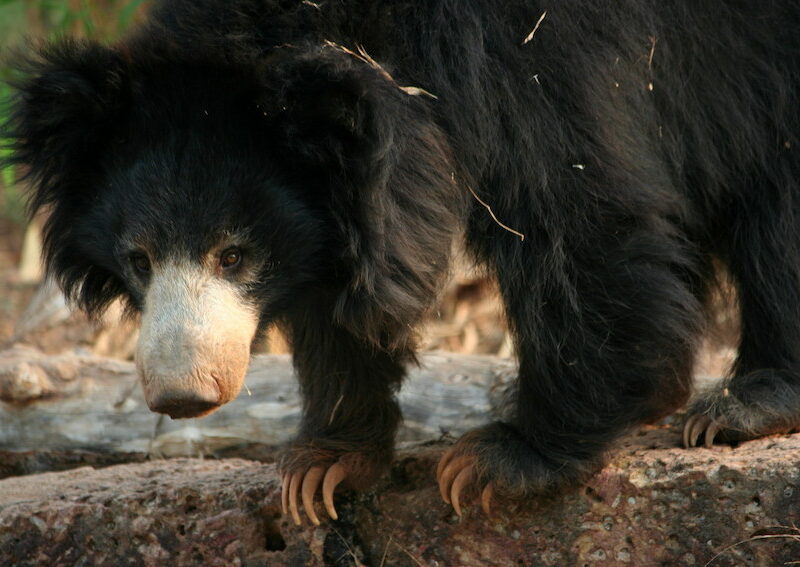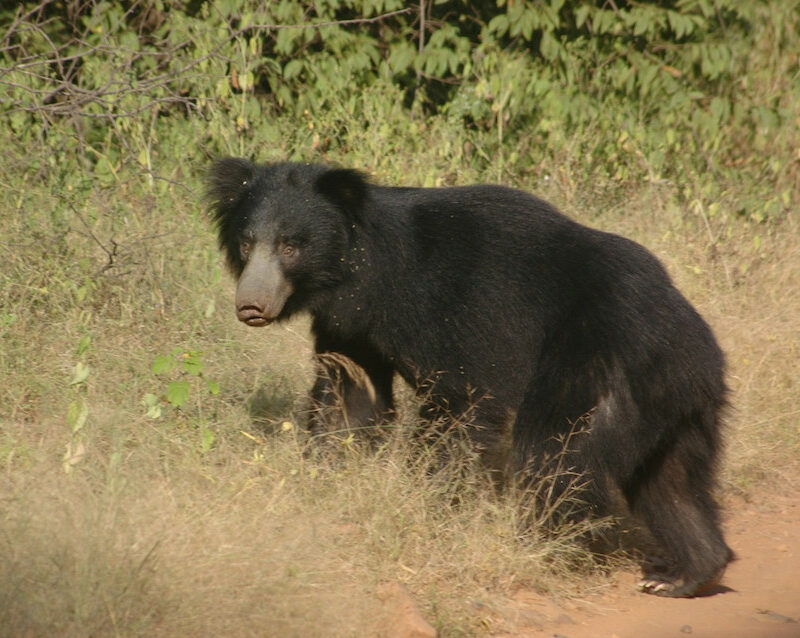Sloth Bear
Species Data
Class: Mammalia
Order: Carnivora
Family: Ursidae
Scientific Name: Melursus ursinus
IUCN Red List status: Vulnerable
Description
The small Sloth Bear gets its name from its sloth-like traits; long claws, shaggy coat and absence of upper middle incisor teeth. It is usually black in colour, although some individuals with reddish coats have been seen. Uniquely among bears, the Sloth Bear feeds primarily on insects; the lack of upper middle teeth allows them to suck insects into their mouths between the gaps in their front teeth.
Behaviour
Sloth Bears are primarily solitary and territorial. They mark their home ranges by stripping bark from trees. Their diet mostly consists of insects, in particular ants and termites; they use their strong front claws to break open a termite mound and then insert their snout and blow away earth and dust before sucking the termites into their mouth. Sloth Bears also feed on honey, eggs, carrion, vegetation and fruits.
The gestation period for the species is around six or seven months, after which the female will give birth in a den, usually to two young. The cubs spend their first three months in the safety of the den and will stay with their mother for up to two and a half years. Sloth Bears are the only bears that carry their young on their backs.


Habitat
Sloth Bears are native to the Indian subcontinent and are found in India, Bhutan, Bangladesh, and Nepal. They can occupy a wide variety of habitats, such as grasslands, thorn scrub and forests, but their range has shrunk considerably in recent years due to habitat loss.
Threats and Conservation
The traditional range of the Sloth Bear has been drastically cut due to destruction of natural habitat for timber, agriculture and development. The species is also vulnerable due to poaching to meet the high demand for bear gall bladder in Asia. The gall bladders are highly sought after for medicinal purposes and despite the ban on trade by the Convention on International Trade in Endangered Species (CITES) the bears continue to be killed illegally.
